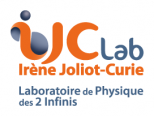This team carries the Imaging activity of the Health Group.
The keywords are:
- Optical and isotopic imaging for the physiological and pathological characterization
- pathological characterization of brain tissues
Context:
The challenges of clinical research are mainly focused on four axes: the reduction of the cost and acceleration of the pace of development of new drugs, the early diagnosis of the disease, the implementation of an individualized and reactive therapy and the multiplication of treatments and minimally invasive interventions. In this context, imaging is playing an increasingly important role in the development of new diagnostic and therapeutic approaches. In oncology, medical imaging techniques are no longer only used to detect and diagnose tumors, but also to determine their stage of development and to monitor their response to various treatments. Imaging is also used to precisely guide surgical interventional techniques, such as diagnostic biopsy and therapeutic removal, to plan radiotherapy treatments or to monitor in real time the implementation of new therapies (cryogenics, hyperthermia, hadrontherapy). From a more fundamental, and therefore preclinical, point of view, imaging also makes it possible to study the biological mechanisms at the origin of a cancerous pathology, to help understand fundamental biological mechanisms, or to optimize the development of new drugs or new therapeutic strategies through the use of systems dedicated to studies on animal models.
In terms of instrumental and methodological developments, these clinical challenges require considerable progress in medical imaging. The improvement of detection efficiency and spatial resolution is one of the essential parameters of this evolution. The development of multimodal systems coupling anatomical and functional information, and in the medium term molecular, is also an important issue to improve the specificity and sensitivity of detection methods. The possibility of combining these imaging tools with those of therapy should also facilitate the implementation of more effective treatment strategies. Finally, the optimization of signal processing and analysis protocols should allow a more quantitative interpretation of images in order to extract reliable biological parameters.






